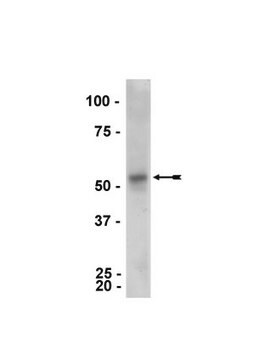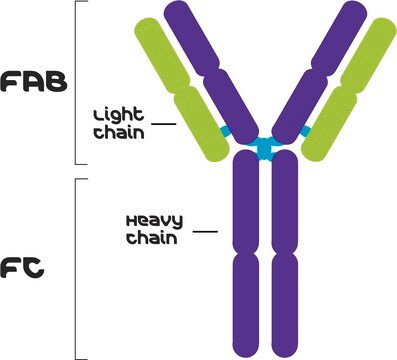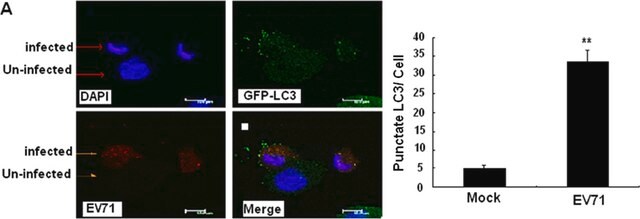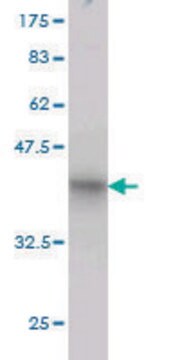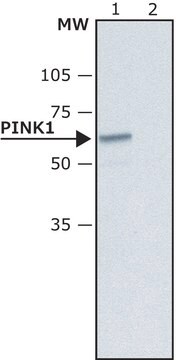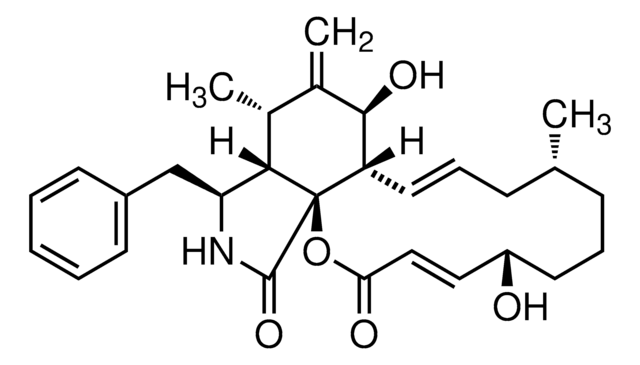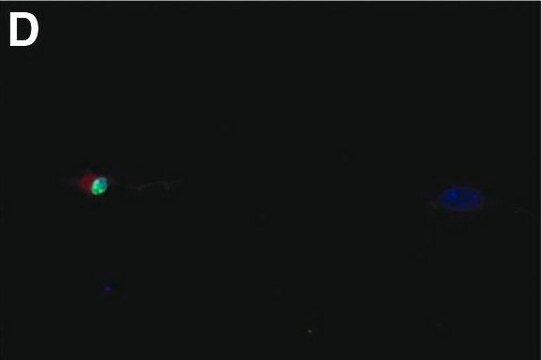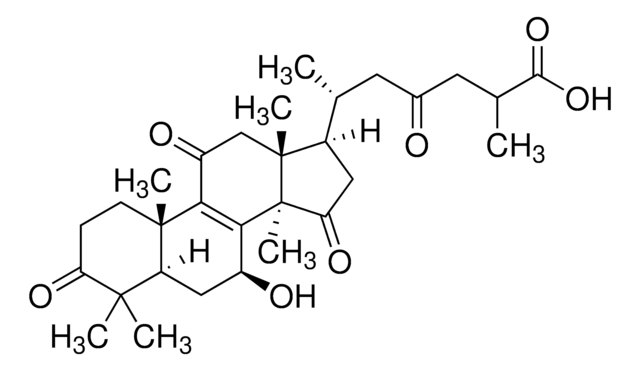P6248
Anti-Parkin antibody, Mouse monoclonal
clone PRK8, purified from hybridoma cell culture
Synonyme(s) :
Anti-AR-JP, Anti-LPRS2, Anti-PARK2, Anti-PDJ
About This Item
Produits recommandés
Source biologique
mouse
Conjugué
unconjugated
Forme d'anticorps
purified immunoglobulin
Type de produit anticorps
primary antibodies
Clone
PRK8, monoclonal
Forme
buffered aqueous solution
Espèces réactives
mouse, rat, hamster, human
Concentration
~2 mg/mL
Technique(s)
microarray: suitable
western blot: 0.25-0.5 μg/mL using using rat brain cytosolic S1 extract
Isotype
IgG2b
Conditions d'expédition
dry ice
Température de stockage
−20°C
Modification post-traductionnelle de la cible
unmodified
Informations sur le gène
human ... PARK2(5071)
mouse ... Park2(50873)
rat ... Park2(56816)
Description générale
Immunogène
Application
- Enzyme linked immunosorbent assay (ELISA)
- Immunoblotting
- Immunoprecipitation[63}
- Immunocytochemistry
- to label parkin in pull-down assay
Forme physique
Clause de non-responsabilité
Not finding the right product?
Try our Outil de sélection de produits.
Code de la classe de stockage
10 - Combustible liquids
Classe de danger pour l'eau (WGK)
WGK 3
Point d'éclair (°F)
Not applicable
Point d'éclair (°C)
Not applicable
Équipement de protection individuelle
Eyeshields, Gloves, multi-purpose combination respirator cartridge (US)
Certificats d'analyse (COA)
Recherchez un Certificats d'analyse (COA) en saisissant le numéro de lot du produit. Les numéros de lot figurent sur l'étiquette du produit après les mots "Lot" ou "Batch".
Déjà en possession de ce produit ?
Retrouvez la documentation relative aux produits que vous avez récemment achetés dans la Bibliothèque de documents.
Notre équipe de scientifiques dispose d'une expérience dans tous les secteurs de la recherche, notamment en sciences de la vie, science des matériaux, synthèse chimique, chromatographie, analyse et dans de nombreux autres domaines..
Contacter notre Service technique
